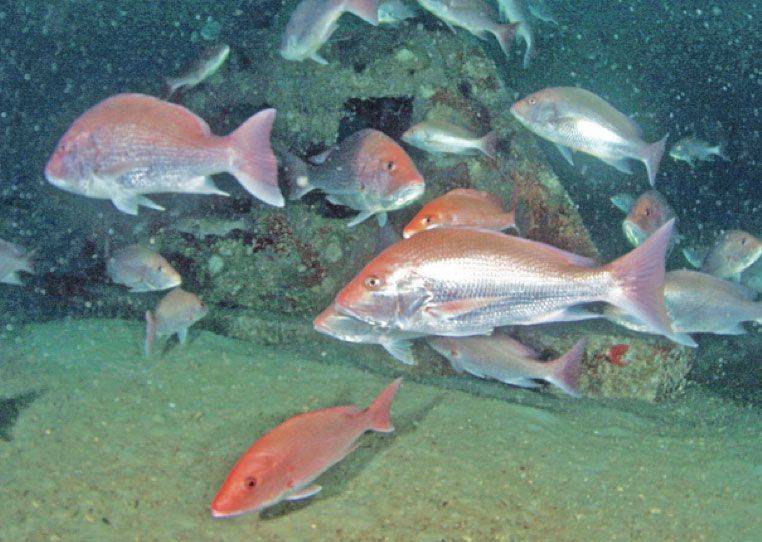By Carol Cox, Mexico Beach Artificial Reef Association Research Diver
[dropcap]A[/dropcap]s a volunteer, I work with two great non-profit organizations as a fish identification specialist. The first is the Mexico Beach Artificial Reef Association (MBARA) and the second is Reef Environmental Education Foundation (REEF). REEF has been gathering fish surveys from scuba divers since 1993. As part of their effort to train divers on fish identification, REEF asked me to put together a seminar for the most common fish in the Northern Gulf of Mexico. It was no surprise to me that Red snapper were on the list, but it was to my friends at REEF. As a research diver with MBARA, I often see Red snappers on most of my dives. Until REEF asked about my numbers, I didn’t know how lucky we are here in the city of Mexico Beach, Florida.
Using REEF’s diver survey database at www.reef.org , I discovered some interesting statistics on Red snappers in our area that amazed me. I assumed everyone in Florida saw them as much as I do and learned that was not the case.
To divers in the southern half of Florida, the Red snapper is a rare fish, seen on less than 1 out of 100 dives. The numbers are higher in the Atlantic north of Cape Canaveral where divers saw Red snappers during 18% of their dives. In the panhandle of Florida the numbers get even better, with Red snappers reported on 35% on the dives. But none of those numbers are close to what I see on the artificial reefs off Mexico Beach. According to my observations and documented surveys, I see red snappers on 78% of my dives.
How did Mexico Beach get so lucky? I can’t prove it, but I like to think it is because of the 150 artificial reefs off the shores of Mexico Beach. MBARA has been busy deploying reefs since 1997. These reefs range from concrete rubble, to pyramids, to a large shrimp boat, and the Red snappers seem to like them all. For a list of the artificial reefs, go to www.mbara.org.
Not all Red snappers on the artificial reefs are “keepers”. For the population to grow, young snappers need structure where they can be protected not only from larger predators, but also the effects of shrimp trawlers where young fish sometimes end up as by-catch. In late summer, the shallower artificial reefs off Mexico Beach are alive with small Red snappers about the size of a quarter.
Underwater, the first thing I often notice is a dark “eye” bobbing above the sandy bottom, near the reef structure. Looking closer, I can see the silver-gray body connected to this black spot, a young Red snapper celebrating its first year of life. Not only do the artificial reefs provide a home for these small fry, they also provide a place for young snappers to forage for the tiny shrimp and crabs that are a main part of their diet.
MBARA is experimenting with new reef systems with the hope they will help nurture juvenile fish. The new structures have more hiding places and more places for their natural food to grow. An artificial reef that shows much promise in this area is called an ecosystem. It consists of Florida limestone-embedded concrete disks stacked up like pancakes. Different size spacers are placed between the layers. After only a few months in the water, these reefs have proven to be very popular with juvenile snappers and young groupers, and as an added bonus they are attracting large numbers of mature Black seabass.

